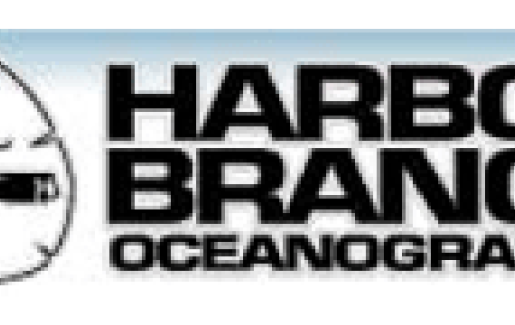Harbor Branch Oceanographic Institution
Harbor Branch Oceanographic Institution (HBOI) is a multifaceted organization that specializes in the fields of Biomarine Medical Research,…
As I look back at all the things the insurance companies tried to do during the adjustment process to avoid paying the claims, I can only imagine how the claims would have been handled had we not had you as our advocate, our ally, and our spokesperson. Your belief in our claim, your unwavering support of our institution, your skills, your tenacity, and your determination clearly inured to our benefit and ultimately fostered a settlement that was beyond our expectations.
Description
Harbor Branch Oceanographic Institution (HBOI) is a multifaceted organization that specializes in the fields of Biomarine Medical Research, Aquaculture, Marine Mammal, Ocean Engineering and Environmental Sciences.
In late August 2004, Hurricane Frances hit the HBOI campus causing widespread damage estimated at $30 million dollars. Damages included several roof sections on the Marine Science Building being blown off and leading to serious water damage to the building. The Oceans, Reefs & Aquariums division lost half of their fish due to a failed emergency power generator and the J. Seward Johnson Education Center had large windows blown out, causing significant damage to the interior of the building. The student dormitories also suffered major rain and water incursion due to failed roofs during the storm.
Several weeks later, Hurricane Jeanne swept through the HBOI campus causing significant new damage to their laboratories, drug discovery programs, aquaculture’s greenhouses and fish stock. The heaviest damage occurred at the Link Building which houses Biomedical Marine Research and Environmental Labs. A large portion of the building’s roof was damaged, allowing a great deal of rainwater to enter the facility, and disrupting ongoing experiments, compromising lab research results and destroying the temperature control systems rendering previous experiments useless.
Issues
Buildings:
- What could HBOI do in order to maximize their insurance recovery considering:
- The limits of liability were site specific, not blanket.
- Coverage in place was written on an actual cash value basis.
- Could HBOI recover the cost to reinstate buildings that were not insured?
- Would HBOI be able to defeat the company’s consultant’s entrenched position relative to scope and specifications of damages per building?
Business Income Loss:
- Would HBOI be able to continue with their research in faulty, water-damaged facilities?
- Did HBOI’s insurance cover them for their non-profit as well as for-profit operations?
- How would the business interruption coverage respond after the second hurricane?
- How would HBOI measure the value of 20 years of experiments?
- Would the insurer respond to the expense of housing dormitory students in another facility while repairs were being made to their original facility?
Solutions Applied
- The first order of business was to thoroughly compare the current insurance policies and prior policies to determine whether they were consistent. It was also necessary to interview the insurance broker. During this process, it was discovered that HBOI made a decision to reduce its insurance costs shortly before the storms for financial reasons. They were aware that coverage had changed from replacement cost to actual cash value, but they were not aware that blanket coverage had been eliminated.
- The Greenspan Co./Adjusters International pursued two avenues: 1) Interfacing with the broker to obtain policy reformation for coverage to be applied on a blanket basis; and 2) Notifying the carriers of HBOI’s intent to make claim for both storms, delineating each hurricane at fifty percent (50%).
- In order to reduce the amount of depreciation, the insurers wanted to apply to the replacement cost loss amounts per location, The Greenspan Co./Adjusters International worked with HBOI to obtain documentary evidence demonstrating to the carriers that even though the buildings were old, many had been recently renovated and preventative maintenance programs were in place, which extended the average life expectancy of building materials. This resulted in a substantial reduction in the amount of depreciation the carriers agreed to apply.
- Prior to HBOI engaging the services of The Greenspan Co./Adjusters International, they’d engaged a construction company—at the insurer’s recommendation—to clean and repair many of the storm-damaged buildings. They were proceeding on a time-and-material basis, and had not begun the task of preparing detailed estimates. To protect the interest of HBOI, The Greenspan Co./Adjusters International had to take control of the situation and create a means with which to allow HBOI to reinstate as many of their buildings as possible, with little or no out-of-pocket expense for depreciation. The fact that blanket coverage had been eliminated and many of HBOI’s buildings were not listed on the Schedule of Insurance, made obtaining reimbursement for building reinstatement challenging. The Greenspan Co./Adjusters International successfully argued that reinstatement of buildings not insured was necessary for HBOI to operate and mitigate their business income loss.
- The Greenspan Co./Adjusters International developed an estimate based on an agreed-upon scope and specifications of repair per building at each insured location. When the estimates were prepared, The Greenspan Co./Adjusters International re-inspected each building with the consultant’s representative and identified omissions and/or deficiencies in their original estimates. Those estimates were modified and a settlement was reached.
- It was necessary to identify and relocate those departments that suffered damage to other lesser-used facilities, with the policy paying for the extra expenses required to outfit and rehabilitate the new locations. The Greenspan Co./Adjusters International accountants met with each of the six division leaders in order to understand their departments’ changing needs following the hurricanes. These included massive relocations of people and resources from one side of the property to the other. In one case, a failing division was completely absorbed by a surviving division so as not to lose the expertise of that department (Clam Aquaculture). The Greenspan Co./Adjusters International’s accountants successfully interfaced with both insurance carriers and negotiated a settlement of all time-element claims acceptable to HBOI.
Outcome
HBOI was severely impacted for more than two years due to the extent of damage generated by the hurricanes. The property and business interruption losses were in the millions. Although substantial differences existed with the carrier’s construction experts and forensic accountants, The Greenspan Co./Adjusters International was successful in the claim adjustment, achieving the kind of successful resolution that HBOI expected and deserved, thus allowing HBOI to continue with their ground-breaking research in the discovery of alternative medical solutions for afflicting diseases.



